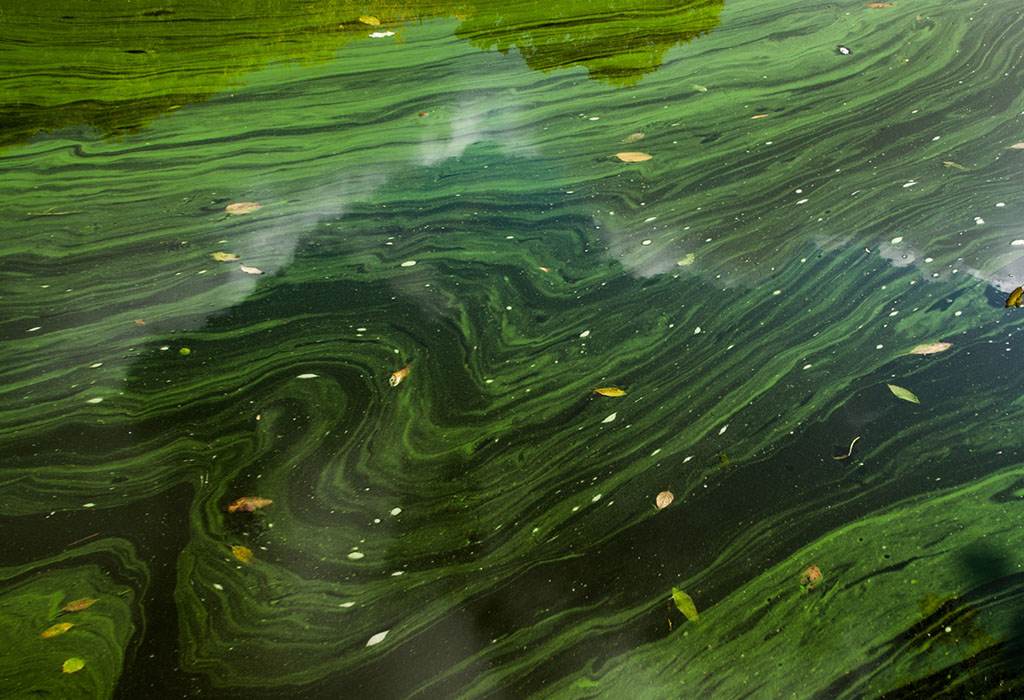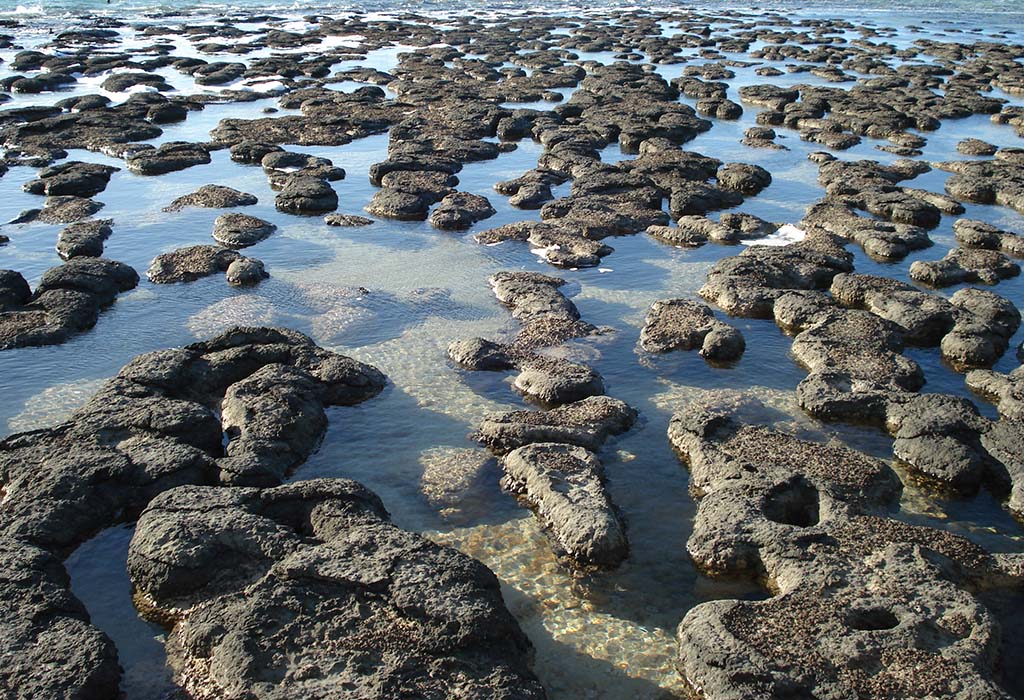The origins of life on Earth
Everything we know about life comes from a sample size of one: life here on Earth. And the fact is, we don’t really know exactly how life arose from inorganic matter all those billions of years ago … and who’s to say that different processes might not have taken place on different planets out there in the universe? Perhaps there are more questions to ask, more possibilities to consider. But let’s start with what we know about some of the very first living things on Earth.
Cyanobacteria, also known as blue-green algae, started out on Earth quite a while ago. Possible fossil examples have been found in rocks that are around 3500 million years old, in Western Australia.
Although commonly referred to as blue-green algae, cyanobacteria are not actually algae. Cyanobacteria, and bacteria in general, are prokaryotic life forms. This basically means that their cells don’t have organelles (tiny structures inside cells that carry out specific functions) and do not have distinct nuclei—their genetic material mixes in with the rest of the cell. This characteristic is distinctive of bacteria and archaea; all other life forms on Earth, including real algae, consist of eukaryotic cells with organelles and with genetic material contained in one place (the nucleus).

Bacteria (and archaea) are hardy creatures. They thrive in hot, cold, salty, acidic and alkaline environments in which most eukaryotes would perish. Despite this, they have a bad image: after all, bacteria cause many diseases in humans.
Yet without them we might not be here at all. Prokaryotes were the earliest life forms, simple creatures that fed on carbon compounds that were accumulating in Earth’s early oceans. Slowly, other organisms evolved that used the Sun’s energy, along with compounds such as sulfides, to generate their own energy. Cyanobacteria then went a step further: they started to utilise water during photosynthesis, releasing oxygen as a by-product. Over time, enough oxygen accumulated in Earth’s atmosphere to allow for the evolution of oxygen-metabolising organisms.
But we may owe bacteria more than the air we breathe. It is likely that eukaryotic cells, of which humans are made, evolved from bacteria about two billion years ago. One theory is that eukaryotic cells evolved via a symbiotic relationship between two independent prokaryotic bacteria. A single bacterium was engulfed by another one, and the smaller cell continued to exist inside the other, which was beneficial to both. They evolved to become the more advanced eukaryotic cell, with its membrane-enclosed nucleus.
Regardless of how it happened, the evolution of eukaryotic cells was a significant milestone in the history of life on Earth. As conditions became more favourable, more complex organisms began to evolve.
Some of the oldest evidence of life on Earth is 3.49-billion-year-old fossilised remains of microbial mat structures, which look like wrinkle marks in rocks, found in the Pilbara region of Western Australia. Also found in the Pilbara region are fossilised remains of stromatolites. These are also mat-like structures of microbes that live in shallow marine environments and are still around today. Sand accumulates on top of the microbial mats, and the microbes move up towards the surface to get to the light again, making distinctive bulbous-shaped layers that eventually solidify into rocks.

As we look elsewhere in the universe for life beyond our home planet, we think we’re most likely to find it lurking somewhere where there’s water, and where there’s a heat source to make the water warm. Although we know that some living things thrive in more extreme conditions, the combination of warmth and water seem to be the most likely requirements for creating an environment that can support some kind of life—at least, the kinds of life forms similar to what we find on Earth. But who knows what other kinds of living things might exist?





